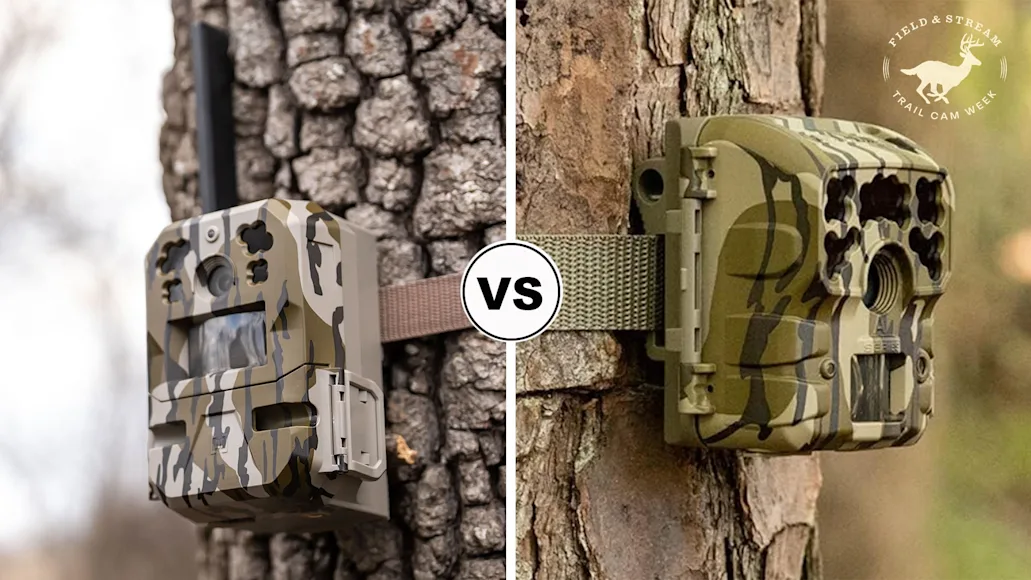_We may earn revenue from the products available on this page and participate in affiliate programs. Learn more ›
_
I think the trail camera
is easily the most influential hunting product of the last quarter century, and recent whitetail harvest statistics back it up. Today’s hunters are killing bigger and older bucks than ever before, due largely to the information revealed on our trail cameras. It’s a lot easier to pass on young 115-inch, 8-pointer when your cameras have shown you that there’s a mature, 150-inch 10-pointer in the area. And those same cameras can help you dial in on that big 10’s habits and set up in the perfect spot to put a tag on him.
The earliest trail cameras evolved from the Trail Timer Game Monitor, a digital device that debuted in the mid-1980s and relied on a string stretched across a game trail. When a critter walked by and tripped the string, the timer would record the day and time of the event on a digital circuit board. Trail cameras using 35mm film came along a few years later, then digital cams in the early 2000s, and in 2007, Moultrie introduced the first cellular trail camera.
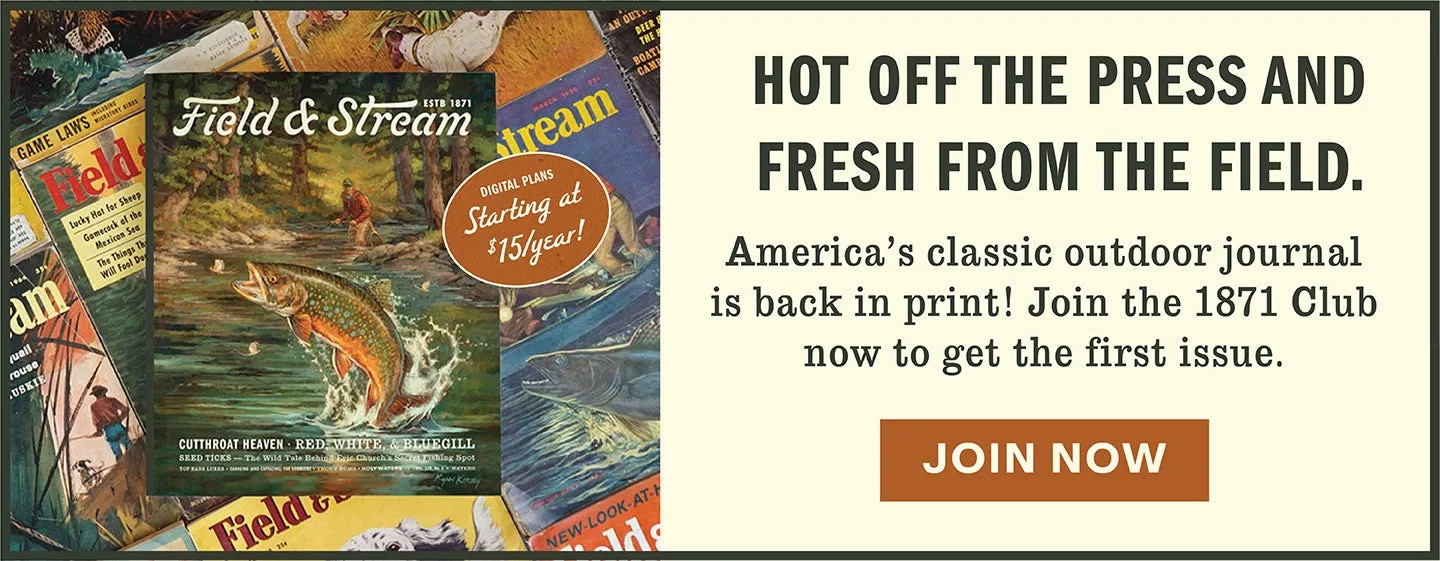
Learn how to get the all-new Field & Stream journal!
Cellular trail cameras have improved dramatically in the past few years, and this technology rightfully dominates the modern trail camera conversation. But traditional trail cameras have improved, too, and they still hold their own in the modern hunter’s toolbox. As a person who makes a good part of his living writing about guiding for whitetail deer, I depend on a mix of both cellular and traditional trail cameras, and I have more than a dozen units deployed on multiple properties all season. Each camera type has its place, and one isn’t necessarily better than the other. The question is: What would work best for you? One, the other, or a combination. Here’s a look at the pros and cons of each camera style.
**Related: 50 of the Craziest Trail Camera Photos You’ve Ever Seen
**
Cellular Trail Cameras
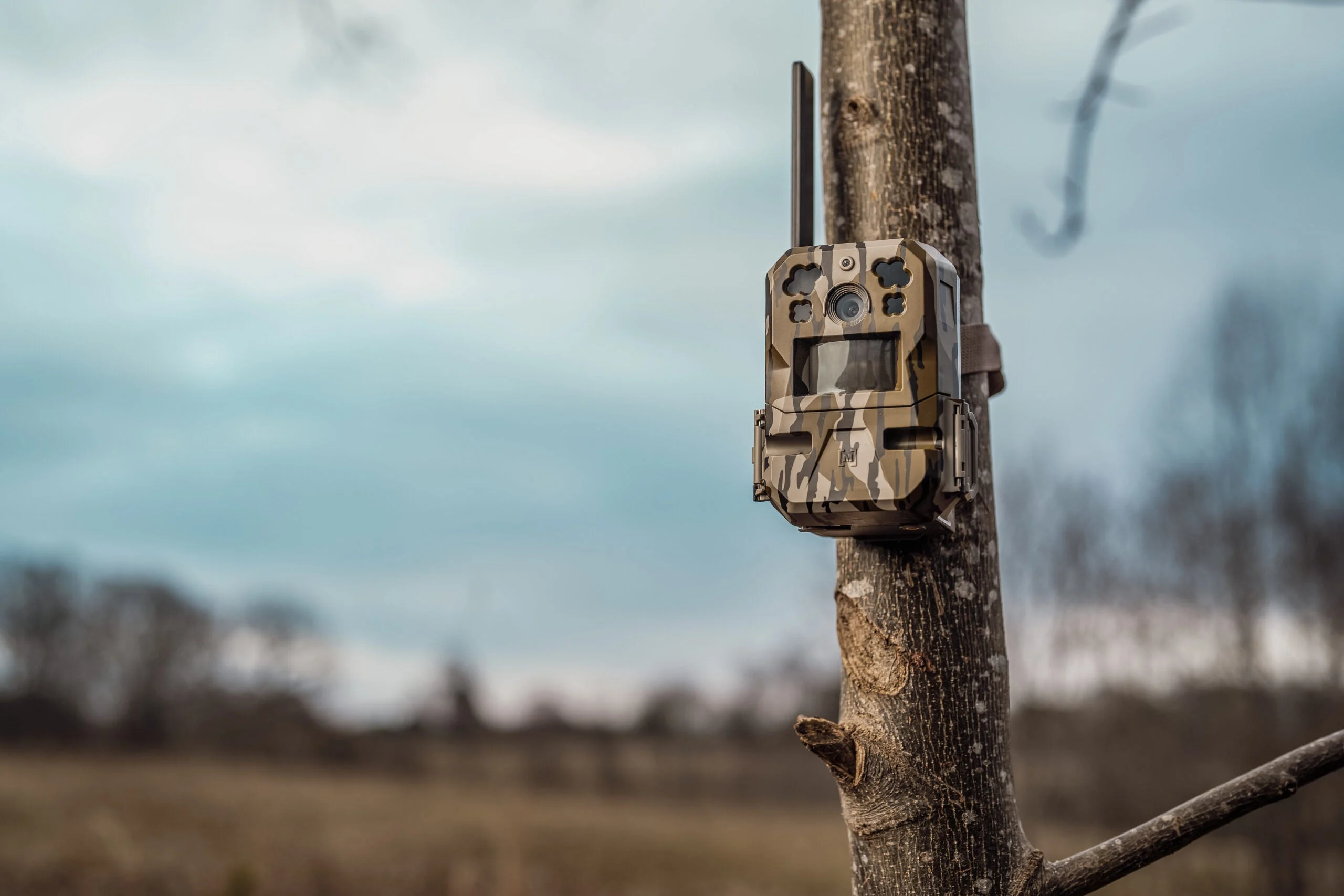
The No. 1 advantage of cell cams is that you can set them up and just wait for the unit to send real-time critter photos to your phone. No need to intrude the area to check or change out SD cards. Moultrie
Pros
Real-time scouting data
Reduced human intrusion
Apps allow for compiling long-term data trends for your specific location
Cons
Data plans cost extra
Cameras don’t work without cell service
Photo quality isn’t always as good as traditional trail cameras
Battery usage is substantially higher
Ideal For
Serious trophy hunters who target individual bucks and want the best possible scouting tool
Small-property hunters who don’t need many trail cameras and want to reduce disturbance
Private-land turkey hunting
Home and property surveillance
Cellular trail cameras use cell phone data to relay photo information back to the user remotely and immediately. Most of the time, a mobile app allows the user to view and sort images and even update the camera settings with a smart phone. The best apps factor in environmental data such as weather, pressure, and moon phases to build long-term data sets for your particular hunting area. Some even use smart software for critter recognition (that actually works really well).
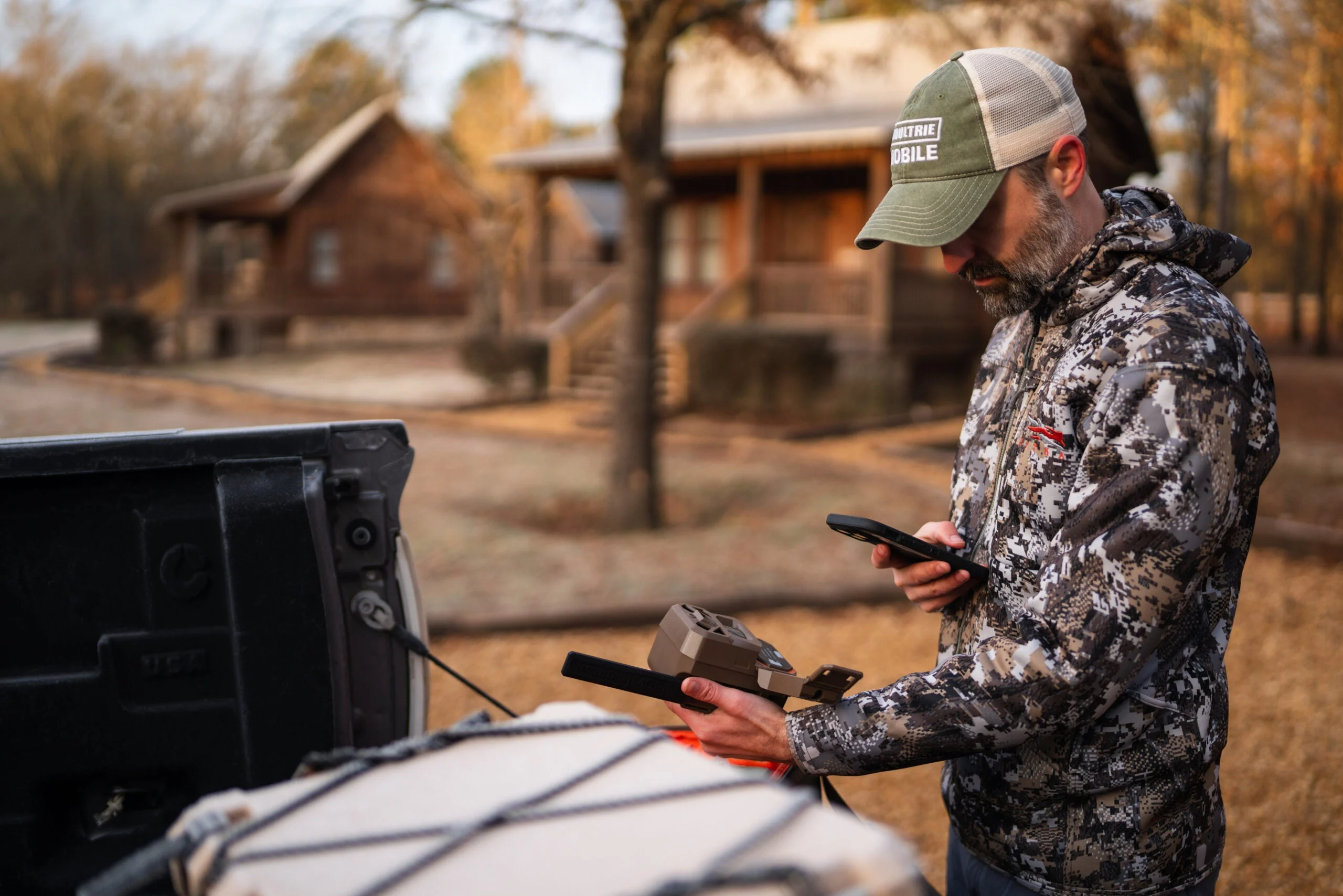
You can set up most cell-cam apps to track key information, like weather conditions and moon phase. Moultrie
There are obvious benefits to the real-time scouting information cell cameras provide. Deciding whether to knock off work early to go hunting is much easier if you know a big buck was under your stand earlier that day. When my job is to put a paying client in the best spot to shoot a buck during a brief timeframe, I depend heavily on cellular trail cameras to give me the most recent information.
To me, cell cameras are most useful when set in areas that are difficult to access, and where I don’t want to be tromping around to check SD cards. I frequently place my cell cams on trails and creek crossings near bedding cover, or along scrape lines deep in the hardwood timber. These are places where I may not get many pictures compared to a mineral lick or food plot edge—but the right photo can be the clue that breaks the case, so to speak, and leads to a filled tag.
Real-time scouting info is particularly useful for other critters, too. In the spring I depend heavily on cell cams to scout turkeys on small pieces of private property. When gobblers are henned up and mum, and you’re confined by property boundaries, cell cams can reassure that you’re still in the chips. My wife shot a big gobbler at noon on a late-season hunt last spring and had hunted all day without hearing a peep. We knew that strutter was around, though, because we’d seen him on a cell camera at midday the two previous days in a row. And, of course, for absentee landowners, cellular cameras provide obvious security and surveillance benefits. Folks with nefarious intent might be able to sabotage the camera, but not before it sends pictures of them back to the user.
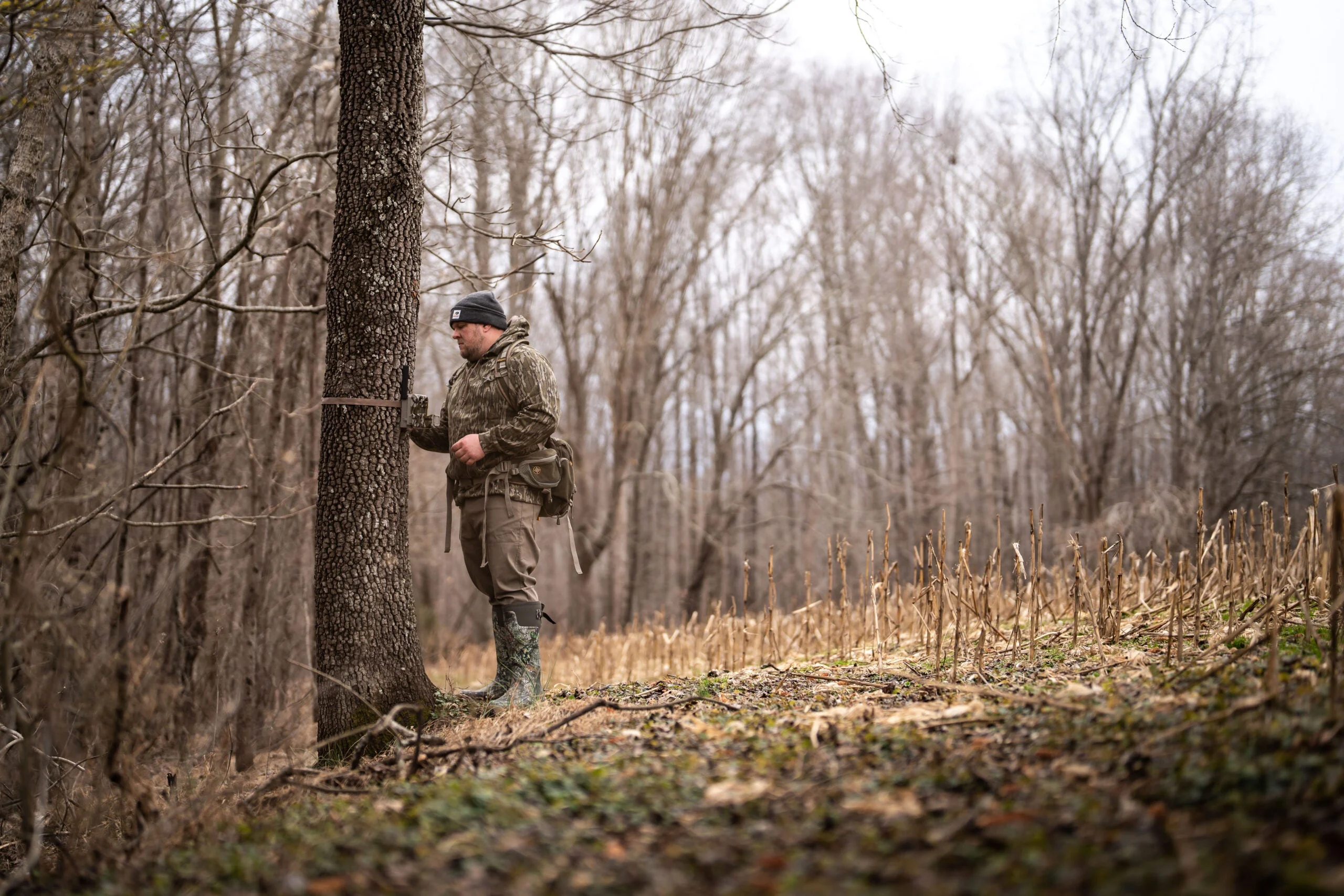
Cell cams are perfect for hidden plots back in the timber, or near trail or sign near a buck’s bedding area. Moultrie
Of course, cell cams aren’t perfect. Modern cameras have way better battery life than the cell cams of just a few years ago—but they still require anywhere from 8 to 16 AAs to get started and drain them more quickly.than your typical conventional cam. Though cell cameras themselves aren’t much pricier than traditional trail cameras, the data plans can be expensive (usually in the ballpark of $13 per camera, per month for unlimited images and 50 videos). And, of course, for any of that to work, cell phone service is required. Though cell cams take photos that are plenty good enough for scouting purposes—and you can usually download hi-resolution images—standard trail cameras take better quality images on average.
**Related: Top Trail Camera Tips for More and Better Photos
**
Conventional Trail Cameras
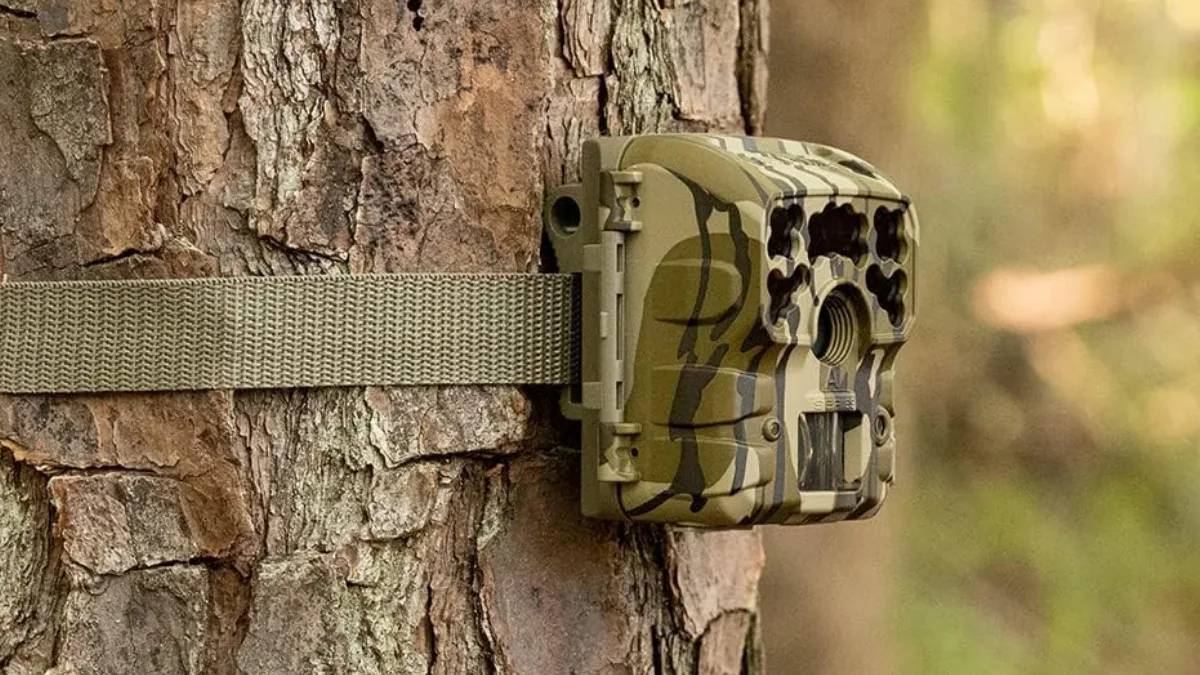
Conventional trail cameras are perfect for areas you can quickly access with minimal intrusion. Moultrie
Pros
Works without cell phone service
Economical
Lower profile
Better photo quality
Faster trigger speeds
Cons
Photos must be retrieved manually, requiring human intrusion
SD cards can malfunction
A card reader is required to view images
Cameras are easy to steal
Ideal For
Passive scouting on crop field and food plot edges
Monitoring feeders or mineral sites
Taking broad inventory on large properties where multiple cameras are needed and can be checked easily
Remote areas without cell service
As good as cell cameras are, traditional trail cameras still do some things better. They’re much easier on batteries, which is a real expense to consider if, like me, you’re running multiple cameras. A number of conventional cams will run all season—or longer—on just four AA batteries (compared to your typical 16 AAs for cell cams), which saves both money and weight in the pack.
The majority of trail cameras are still set in easy-to-check places like over mineral licks, next to feeders, and on the edges of crop fields and food plots. In spots like that, cell cameras lose some advantage, since SD cards can be checked at midday without disturbing much. Plus, since standard trail cameras typically have more megapixels than cellular cameras, you can use them in such areas to take really crisp, detailed photos of a buck.
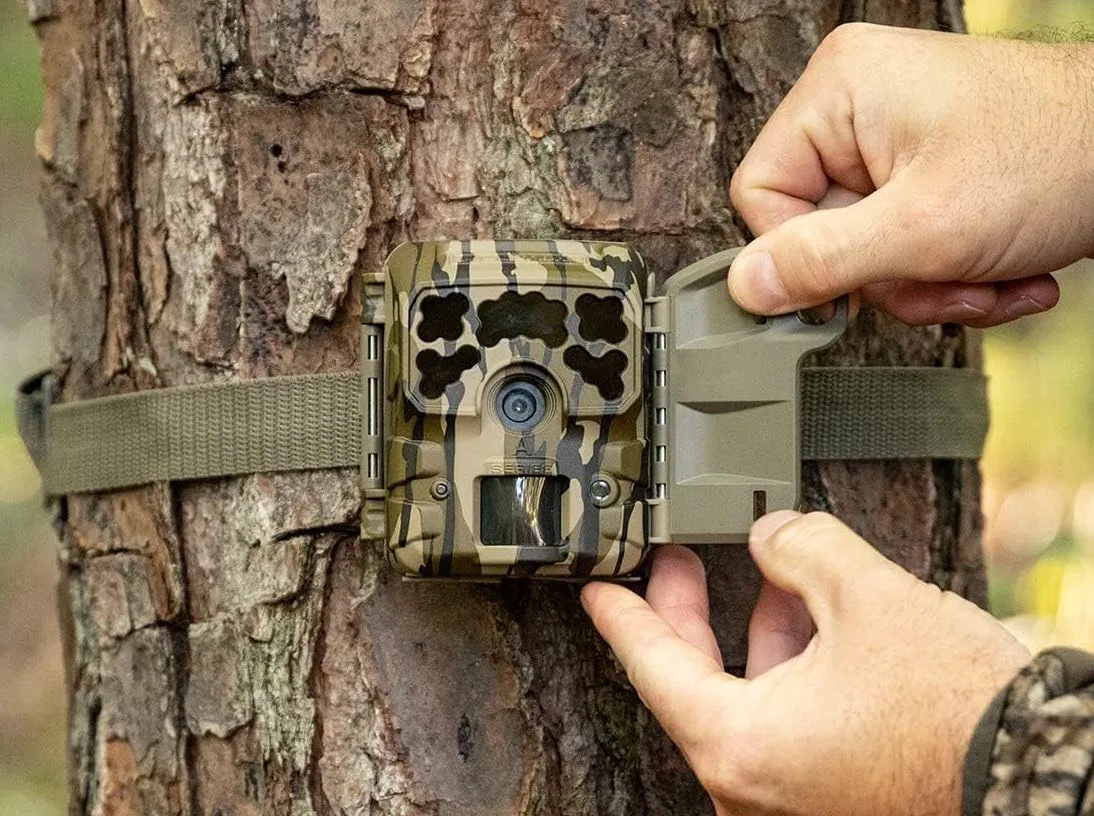
Conventional cams are typically smaller, lighter, simpler to use, and use up less battery life that cell cams. Moultrie
Though I’ve had some success—and really enjoy—targeting individual bucks all season, it’s not always the best way to fill a tag. My usual season-long strategy involves taking an inventory of the deer herd on several small to mid-size properties, identifying multiple bucks I’d be happy with shooting, and then using weather conditions, season phase, and knowledge of the property to make my hunting decisions. Sure, if I get a recent daylight photo of a good deer, I hunt him immediately. But far more often, I’m setting up in what I know is a good spot, where I know shooter bucks live, when the weather conditions are favorable, and hoping for the best. I’ve killed a lot of nice deer that way. I depend on a bunch of traditional trail cameras to help with that effort, partly for the cost savings and partly because 60% of the areas I hunt have no cell phone service.
Of course, traditional cameras have their drawbacks, too. If you’re checking them once per week, like I do, the information is obviously dated. Nothing like knowing a big deer was under your stand last Sunday morning after you stayed out too late last Saturday night. Pulling SD cards and reviewing images on a card reader or computer without an app is fun, but also time consuming—especially if you’re sorting images from multiple cameras. Some say that traditional trail cameras are more reliable than cell cams, but they’re not. SD cards get corrupted and fail all of the time. Blades of grass trigger endless photos and drain batteries. Power switches are forgotten, and cameras are aimed too high. Those things can happen with cell cameras, too, but the difference is you can correct problems proactively by taking a few test images and checking your app in the field before you leave.
**Related: Where to Put Trail Cameras for Big Bucks
**
You Most Likely Need Both

While many hunters are moving toward cell cams, most still have and use conventional cams too. Moultrie Mobile
If you only need one or two trail cameras, spring for cell cams. The benefits are more than worth the extra cost of using them, and once they’re up and going, they’re less hassle than traditional trail cameras.
But if you’re like me and running multiple cameras in multiple areas, a combination of both styles is best. Place the standard trail cameras in easy-to-check places, to keep tabs on what deer are in the area, and of course anywhere that cell coverage is non-existent. Treat your cell cameras as more surgical tools. Once you find a big buck, use them to really home in on his routine, or to tell you when the deer are moving way too much for you to stay at work.

